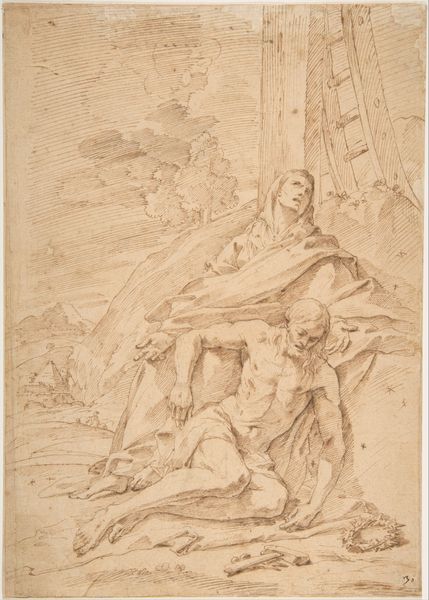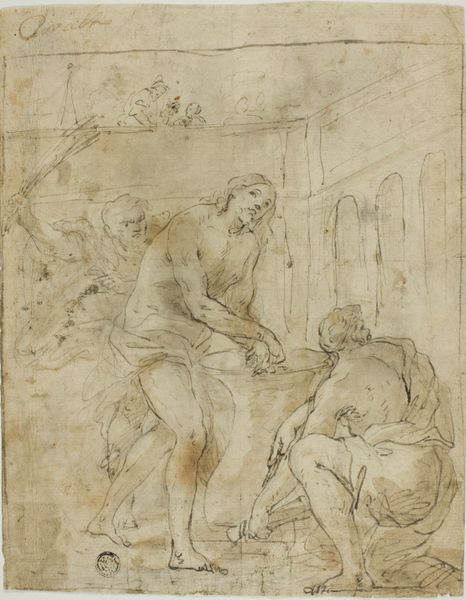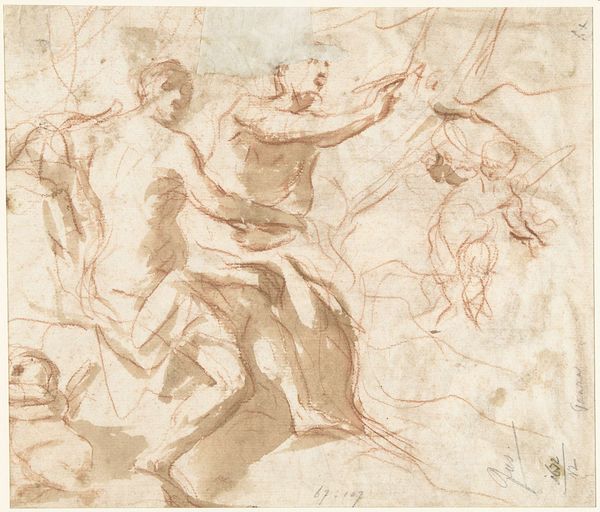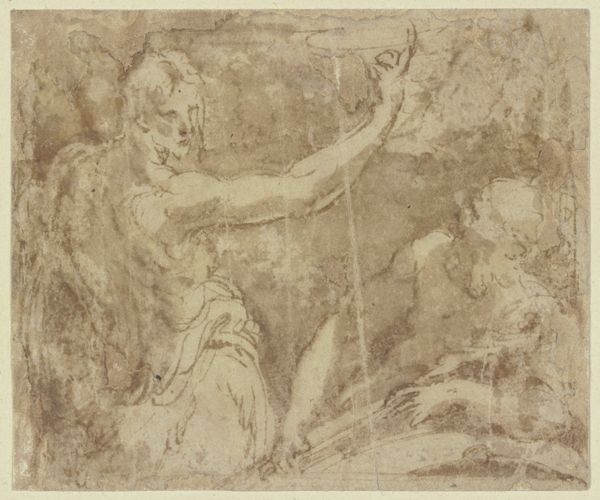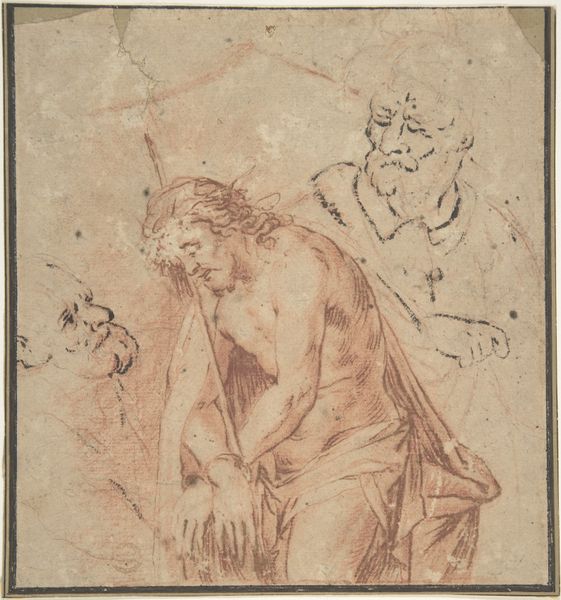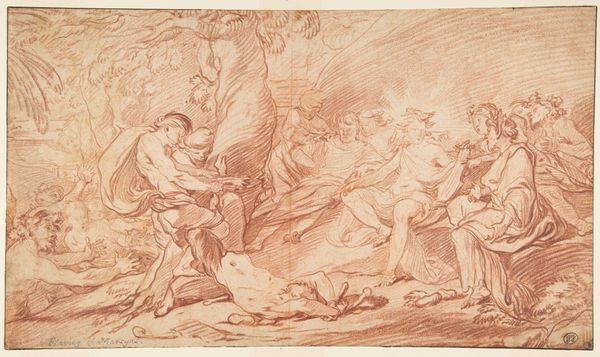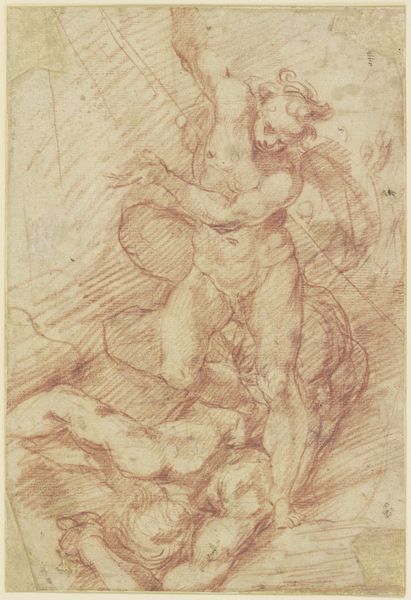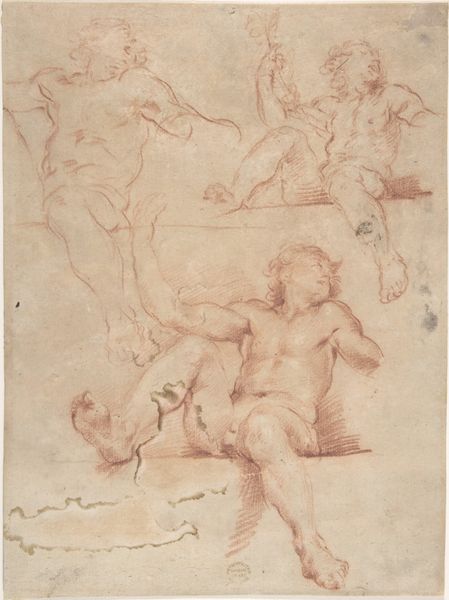
Framed Sketch for a Man, a Dog and a Tree 1612 - 1666
0:00
0:00
drawing, graphite, charcoal
#
portrait
#
drawing
#
dog
#
landscape
#
11_renaissance
#
graphite
#
charcoal
Dimensions: 5-3/8 x 7-3/8 in. (13.7 x 18.7 cm) irregular borders
Copyright: Public Domain
Editor: So, here we have Pier Francesco Mola’s "Framed Sketch for a Man, a Dog and a Tree," created sometime between 1612 and 1666. It’s a drawing using graphite and charcoal. It feels… almost fleeting, like a moment captured quickly. What stands out to you, looking at this piece? Curator: What is immediately apparent is the dynamic interplay of lines. Note the confident strokes defining the figure and the dog, contrasted with the more delicate rendering of the landscape. Observe the artist's strategic use of hatching to create a sense of depth and volume. The limited palette serves to unify the composition, drawing attention to the formal relationships within the sketch. Editor: So, the color choice isn't necessarily about realism, but more about unifying the overall image? Curator: Precisely. Color, in this case, functions structurally. Ask yourself, what if this had been in full, vibrant color? Would it still evoke the same sense of immediacy, the captured moment you astutely observed? The formal elements – line, tone, composition – dictate the experience. We see here a preliminary study, a skeletal structure upon which a more finished work might have been built. Do you agree? Editor: I think I do. Thinking about it formally, I’m also struck by the movement created by the diagonals - the slope of the ground, the reaching limbs, even the dog's posture... It really does bring a sense of life. Curator: Indeed. Mola expertly uses diagonal lines to create a feeling of energy and dynamism. Notice how these lines intersect and converge, guiding the viewer's eye throughout the composition. This formal device injects the drawing with a vital sense of narrative possibility, almost irrespective of subject. Editor: I'm starting to see how the lack of polish makes the formal elements so much more apparent. Thank you. Curator: You're most welcome. Considering the intrinsic structure often provides the key to appreciating the entirety of an artwork.
Comments
No comments
Be the first to comment and join the conversation on the ultimate creative platform.
